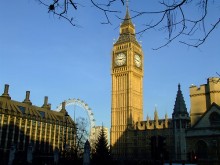The Great Fire Of London in 1666 started in Pudding Lane, within Thomas Faynor’s bakery. It happened about 1am on 2nd September and expanded across the city from there.
The fire spread so quickly, because of the strong wind and the fact that most of the buildings were made from wood at the time. After the baker’s shop was taken over by roaring flames, it moved onto the rest of the lane, then towards Fish Hall and the Thames.
The warehouses by the Thames and London Bridge were also covered in flames. The Great Fire Of London has become a huge historical moment, because it was so difficult to put out and took over an area measuring half a mile by one and a half miles, burning for five days.
There was no fire brigade in the capital at the time, and it just kept spreading so quickly, especially as the streets were narrow, and the houses so close to each other. St Paul’s Cathedral was also destroyed, including its lead roof, along with various other important buildings.
Amazingly, only five people actually died. Many people were left homeless and restoration work had to begin, as the city was almost completely destroyed.
The Great Fire Of London did have a positive outcome though. It got rid of the plagued streets and sterilized the diseases within them.
The Thames river was also an open sewer at the time, where dangerous bacteria and pungent odours were rife. The fire boiled the water, destroying the diseases contained within.
The fire spread so quickly, because of the strong wind and the fact that most of the buildings were made from wood at the time. After the baker’s shop was taken over by roaring flames, it moved onto the rest of the lane, then towards Fish Hall and the Thames.
The warehouses by the Thames and London Bridge were also covered in flames. The Great Fire Of London has become a huge historical moment, because it was so difficult to put out and took over an area measuring half a mile by one and a half miles, burning for five days.
There was no fire brigade in the capital at the time, and it just kept spreading so quickly, especially as the streets were narrow, and the houses so close to each other. St Paul’s Cathedral was also destroyed, including its lead roof, along with various other important buildings.
Amazingly, only five people actually died. Many people were left homeless and restoration work had to begin, as the city was almost completely destroyed.
The Great Fire Of London did have a positive outcome though. It got rid of the plagued streets and sterilized the diseases within them.
The Thames river was also an open sewer at the time, where dangerous bacteria and pungent odours were rife. The fire boiled the water, destroying the diseases contained within.

